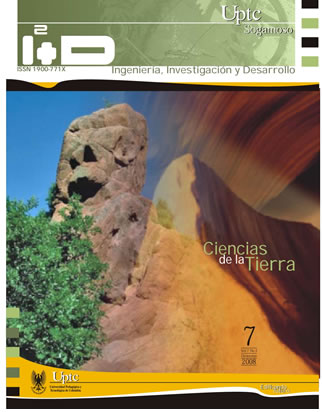Implementación de un controlador LQG para la protección sísmica de un modelo estructural de un grado de libertad

Resumen
Presenta el modelado y la identificación de una estructura de un grado de libertad, así como el diseño de un controlador activo LQG que busca reducir las vibraciones de la estructura de un piso ante excitaciones sísmicas en su base. El controlador usa como realimentación la aceleración del primer nivel de la estructura y se diseña con base en el modelado y la identificación del sistema estructural realizado. El modelo se validó experimentalmente y el desempeño del sistema de control se verificó en simulación y experimentalmente, excitando la estructura en su base con los sismos de El Centro y Armenia, observando disminuciones en la aceleración relativa de la estructura hasta en un 63,68% y desplazamientos relativos inferiores al 1% de la altura.Palabras clave
control activo, control estructural, LQG, modelado, motor lineal
Citas
- Battaini, M., Yang, G., & Spencer, B. F. (2000): Bench-scale experiment for structural control. Journal of Engineering Mechanics, vol.126 (2), 140-148.
- Center, E. E. R. (2008): Applications of Passive Protective Systems Around the World. Retrieved 19/10/2008, from http://nisee. berkeley. edu/prosys/applications. html.
- Chopra, A. K. (2000): Dynamics of structures: theory and applications to earthquake engineering, Prentice Hall, 2007.
- Datta, T. K. (2003): A state-of-the-art review on active control of structures. ISET Journal of earthquake technology, vol. 40(1), 1-17.
- Dyke, S. J. (1996): Acceleration feedback control strategies for active and semi-active control systems: modeling, algorithm development, and experimental verification (Doctoral dissertation, directed by B. F. Spence, Jr. for the Department of Civil Engineering and Geological Sciences.University of Notre Dame).
- Dyke, S. J., Spencer, B. F., Quast, P., Kaspari, D. C., & Sain, M. K. (1996): Implementation of an active mass driver using acceleration feedback control. Computer‐Aided Civil and Infrastructure Engineering, vol. 11(5), 305-323.
- Dyke, S. J., Spencer Jr, B. F., Quast, P., Sain, M. K., Kaspari Jr, D. C., & Soong, T. T. (1994): Experimental verification of acceleration feedback control strategies for an active tendon system. Nat. Center for Earthquake Engrg. Res., Tech. Report NCEER-94, 24.
- Gómez, D., MARULANDA, J., & THOMSON, P. (2008): Sistemas de control para la protección de estructuras civiles sometidas a cargas dinámicas. Dyna, vol. 75(155), 77-89.
- Guclu, R. (2006): Sliding mode and PID control of a structural system against earthquake. Mathematical and Computer Modelling, vol. 44(1), 210-217.
- NEHRP. (2003): Recommended provisions for seismic regulations for new buildings and other structures. Paper presented at the Building seismic safety council.
- NSR-98. (1998): Ley 400 de 1997, Normas Colombianas de Diseño y Construcción Sismo Resistente.
- Song, G., Ma, N., & Li, H. N. (2006): Applications of shape memory alloys in civil structures. Engineering structures, vol. 28(9), 1266-1274.
- Soong, T. T., & Spencer, B. F. (2002): Supplemental energy dissipation: state-of-the-art and state-of-the-practice. Engineering structures, vol. 24(3), 243-259.
- Symans, M. D., & Constantinou, M. C. (1999): Semi-active control systems for seismic protection of structures: a state-of-the-art review, Engineering structures, vol. 21(6), 469-487.
Descargas
Los datos de descargas todavía no están disponibles.